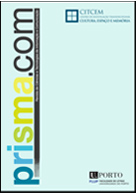Business intelligence na educação superior: Oportunidades e Desafios
Resumo
A necessidade de consolidar a informação extraída a partir de diversas fontes de dados é comum na maioria das organizações, o que promoveu os sistemas de business intelligence (BI) e dashboards a uma posição de destaque. Entretanto, há poucos estudos sobre a aplicação de BI e dashboards na educação superior. Este estudo é uma revisão sistemática da literatura sobre as pesquisas de BI e aplicação de dashboards em instituições de educação superior. A busca foi realizada nas bases de dados Scopus e Web of Science. Em primeiro lugar, os resultados deste estudo foram a identificação de vinte e um tópicos de pesquisa da aplicação de BI em instituições de educação superior, sendo os principais tópicos: Learning analytics, Acadêmico/Ensino, Pesquisa e desenvolvimento, Financeiro e Biblioteca. Em segundo lugar, identificou-se seis tipos de artefatos relacionados a BI: modelo, framework ou metodologia; arquitetura; modelo dimensional do DW; indicadores; dashboard; Protótipo ou sistema e Ferramentas. Os artefatos auxiliam resolver problemas organizacionais em universidades. Este estudo traz contribuições para a área de políticas de educação superior com a identificação de gaps na literatura em que futuras pesquisas merecem maior e menos atenção e tem potencial de serem exploradas.
Downloads
Publicado
Como Citar
Edição
Secção
Licença

Este trabalho encontra-se publicado com a Licença Internacional Creative Commons Atribuição 4.0.
A PRISMA.COM fornece acesso livre, imediato e gratuito ao conteúdo das suas publicações no sentido de apoiar o compartilhamento global de conhecimento, sendo as suas edições publicadas sob a licença Creative Commons Attribution (CC BY 4.0).
Autores que publicam nesta revista concordam com os seguintes termos:
- Autores conservam os direitos de autor e concedem à revista o direito de primeira publicação, com o trabalho simultaneamente licenciado sob a Licença Creative Commons Attribution que permite a partilha do trabalho com reconhecimento da autoria e publicação inicial nesta revista.
- Autores têm autorização para assumir contratos adicionais separadamente, para distribuição não-exclusiva da versão do trabalho publicada nesta revista (ex.: publicar em repositório institucional ou como capítulo de livro), com reconhecimento de autoria e publicação inicial nesta revista.
- Autores têm permissão e são estimulados a publicar e distribuir o seu trabalho online (ex.: em repositórios institucionais ou na sua página pessoal) a qualquer ponto antes ou durante o processo editorial, já que isso pode gerar alterações produtivas, bem como aumentar o impacto e a citação do trabalho publicado (Veja O Efeito do Acesso Livre).






